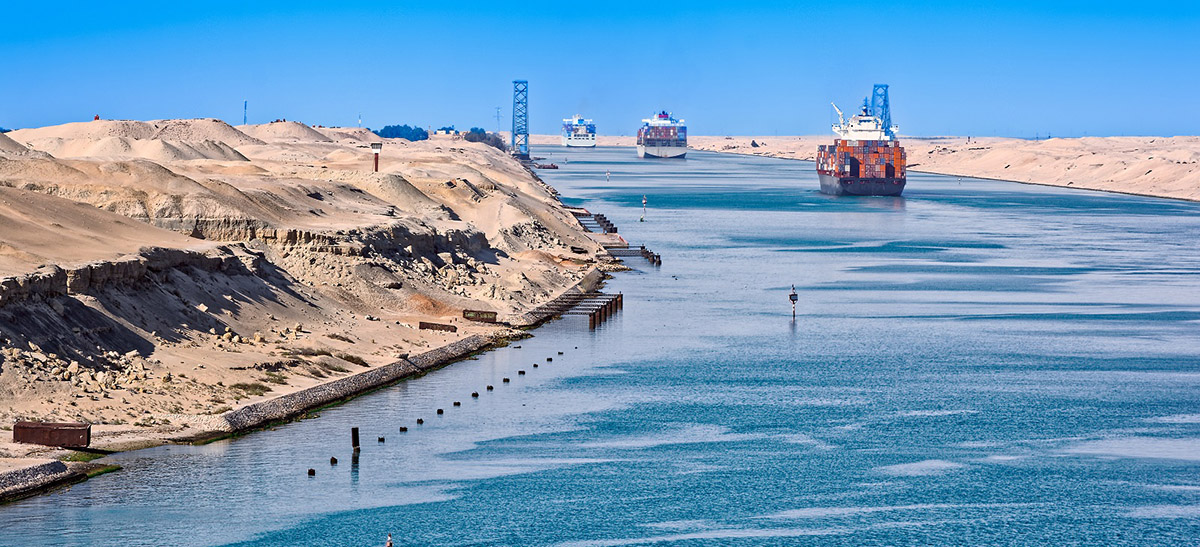
There are artificial channels that mankind has built the world and that are world famous. One of them is the Suez Canal. In today's article we are going to focus on the second, the african channel that revolutionized the commercial history of the region and the world.
The Suez Canal joins the Mediterranean Sea with the Red Sea and is usually seen as the border between Asia and Africa. The story of how it was envisioned and built is not without controversy and political strife, but human ingenuity ended with success.
The Suez Canal
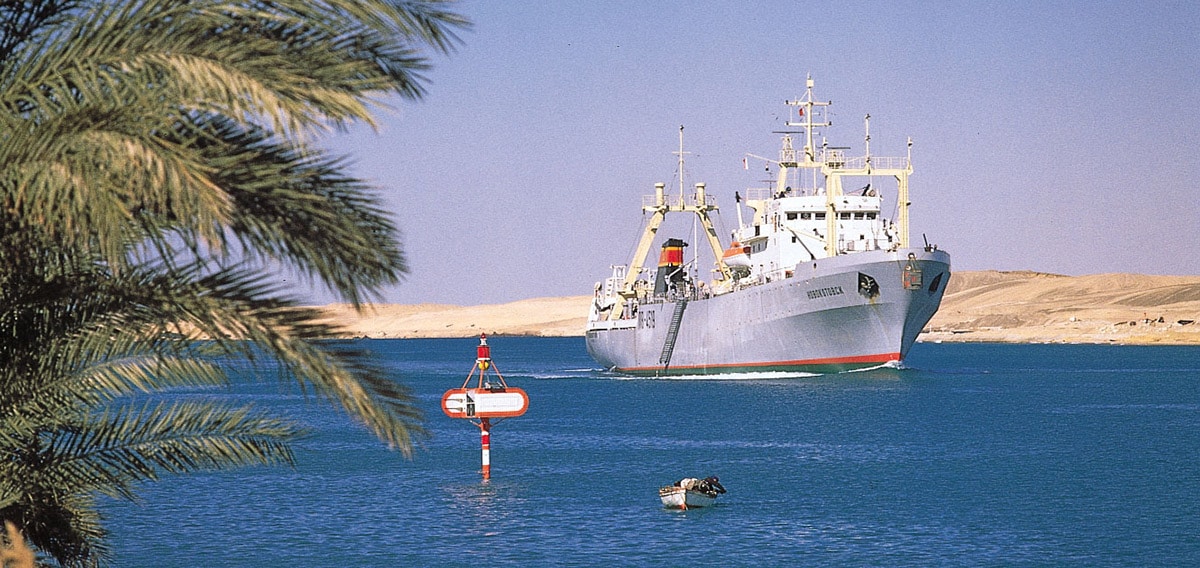
This artificial canal, a canal at sea level, it was built in the middle of the XNUMXth century to open a direct route between the North Atlantic and the Indian Ocean via the Mediterranean and the Red Sea, avoiding going around the Atlantic and the southern part of the Indian Ocean, thus reducing travel time by thousands of kilometers.
The channel It starts at Port Said and ends at Port Tewfik in the city of Suez. Walk a little more than 193 thousand kilometers and it has access channels in the north and south. The original layout consisted of a single waterway, without gates, with seawater and passage points at Ballah and at Great Bittler Lake.
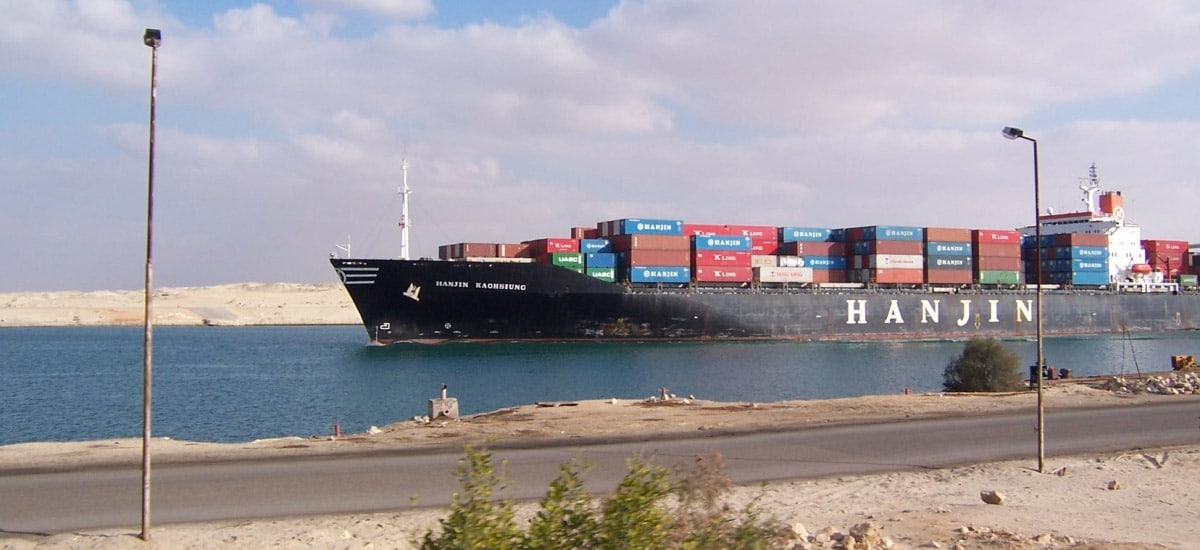
In the XNUMXth century the great European empires still had power in Africa, so the UK and France were the ownersThey were so for many years, until after the Second War, in the process of decolonization, the president of Egypt at that time, Nasser, decided to nationalize him. Obviously, he couldn't do it without conflict, but it was finally done.
From then on, and with the signing of a treaty, it was decided that the canal would always be used, in times of peace and war, by any ship of any kind, without distinction of flag. If you see a map of Africa, you surely understand how important the channel is for conflicts in the area.
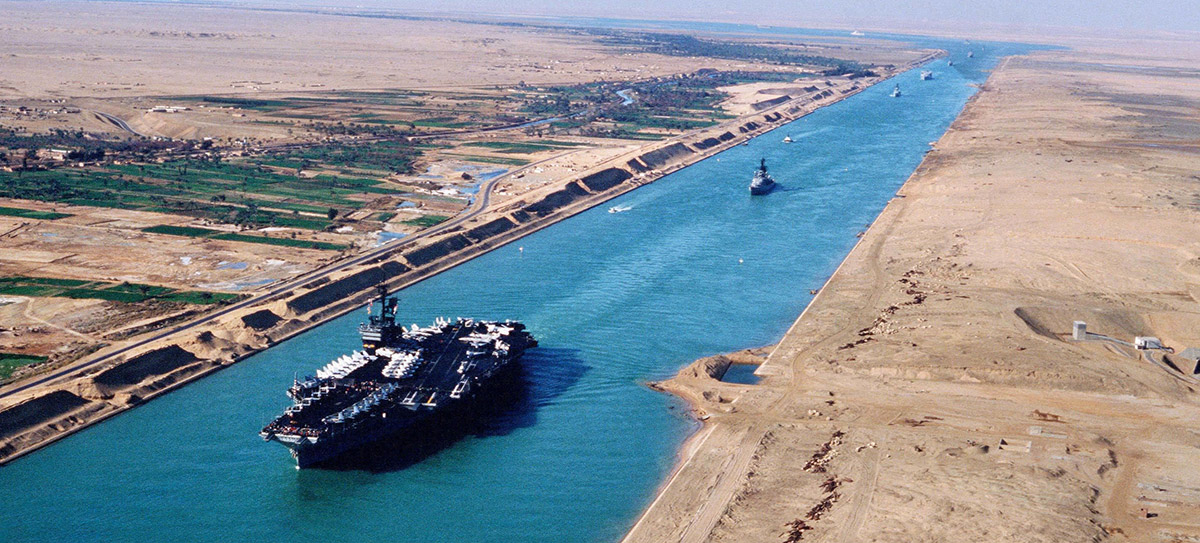
A few years ago, In 2014, Egypt began the task of expanding the Ballah Pass in 35 kilometers to make the circulation faster and perhaps even to double the capacity of the canal in the number of ships that can pass per day. It was achieved and the works were inaugurated a year later. What's more, In 2016, a new side channel was opened.
But is it the first time that humans have built something similar? No. It seems that as early as the ancient Egyptians it was the intention to facilitate travel from the River Nile to the Red Sea. Thus, it is believed that they built a small canal, perhaps in the time of Ramses II and later by Darius, the Persian king.
The Ottomans also considered it, back in the XNUMXth century, already wanting to connect the Mediterranean with the Red Sea, with the desire to connect Constantinople with trade and pilgrimage routes.
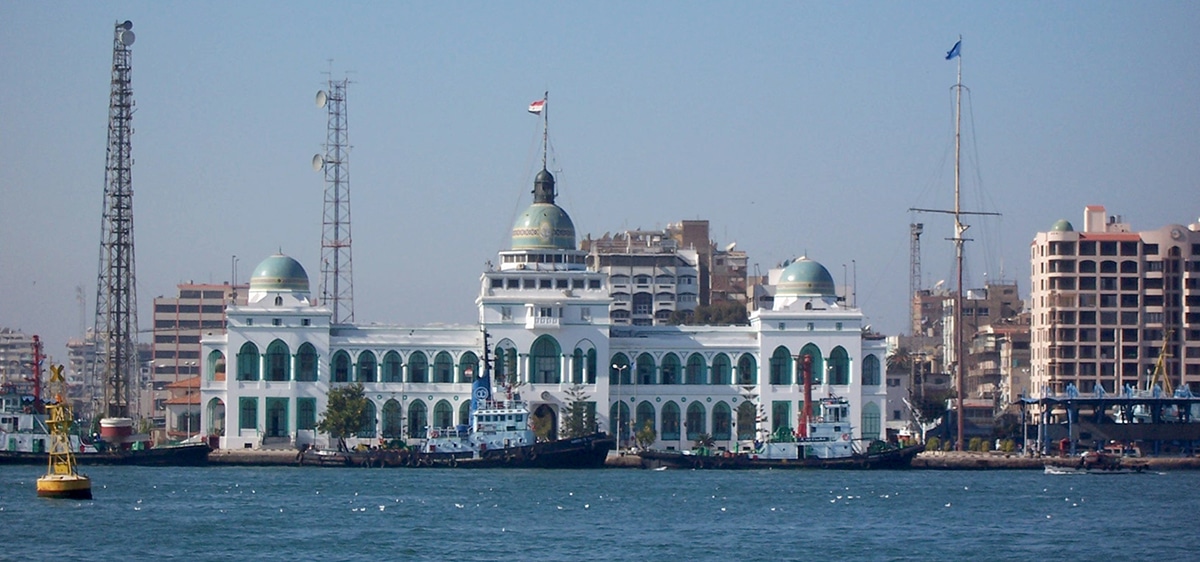
However, it was very expensive, so not much came out of the papers. At the time of the French campaign in Egypt to Napoleon He was interested in the remains of an old canal and then French cartographers and archaeologists wandered all over the land. Being emperor showed more interest in building a canal but the construction of gates made the works more expensive and also took a lot of time, so in the end the idea was abandoned.
Of course, the idea came and went from the minds of many people through time until it was realized. Eventually, things got serious and it was decided to build it. Is was funded by the Suez Canal Company, a union of several companies based in Paris. At the beginning, 52% of the shares were in the hands of France and 44% in the hands of Egypt, but later this country sold them to the United Kingdom.
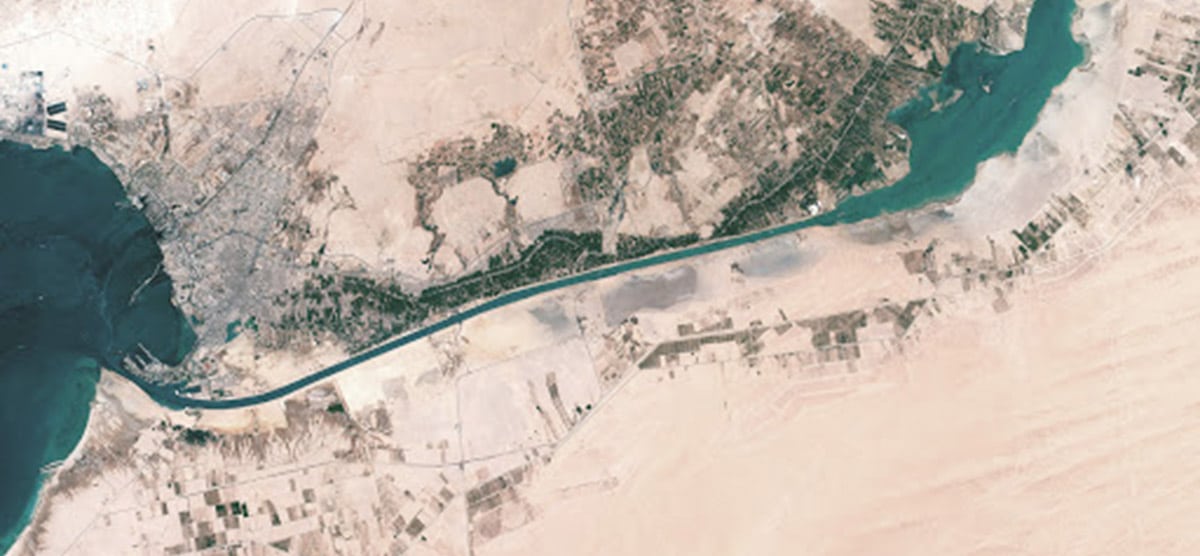
The channel was built on the Suez Isthmus, a land bridge between Africa and Asia that in geological terms is quite recent. It is known that before both continents were a single mass and that between 66 and 2.6 million years ago a huge fault developed separating them. It is not a uniform isthmus, has three water-filled depressions that are the Lake Manzala, lake timsah and Bitter Lakes.
The isthmus is made up of marine sediments, sand and gravel that were deposited in times of heavy rains or arrived by the Nile or brought by the flying sands of the desert. Here the construction of the canal was decided, works that took place between 1859 and 1869. Ten years of excavations with workers who worked forcibly, many of whom ended up dying.

It was not a project that at the beginning raised a lot of hope and that complicated the sale of shares. But hand in hand with the Rothchild family, famous bankers, shares at least in France ended up selling like hot cakes. Meanwhile, the UK was skeptical and critical of the use of quasi-slave laborers.
Finally, the Suez Canal opened in November 1869 with a ceremony in Port Said that included fireworks, banquet and aristocrats. As is to be expected In the early days the channel had some technical and financial difficulties since the costs had skyrocketed a bit. Also, traffic only really started to grow two years later so around that time the uncertainty continued.
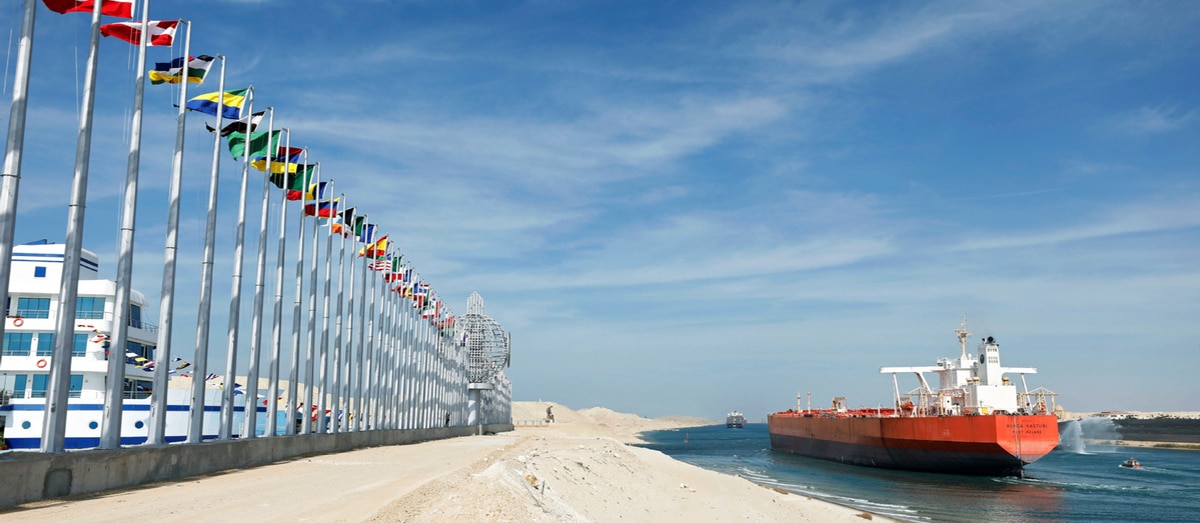
But beyond all the problems and speculations the truth is that the Suez Canal was extremely important in the contact between nations. At that time the channel was a single track about 8 meters deep and 22 meters wide at the bottom and between 61 and 912 meters wide at the surface. Passage bays were built every eight to ten kilometers to allow the passage of ships from each side.
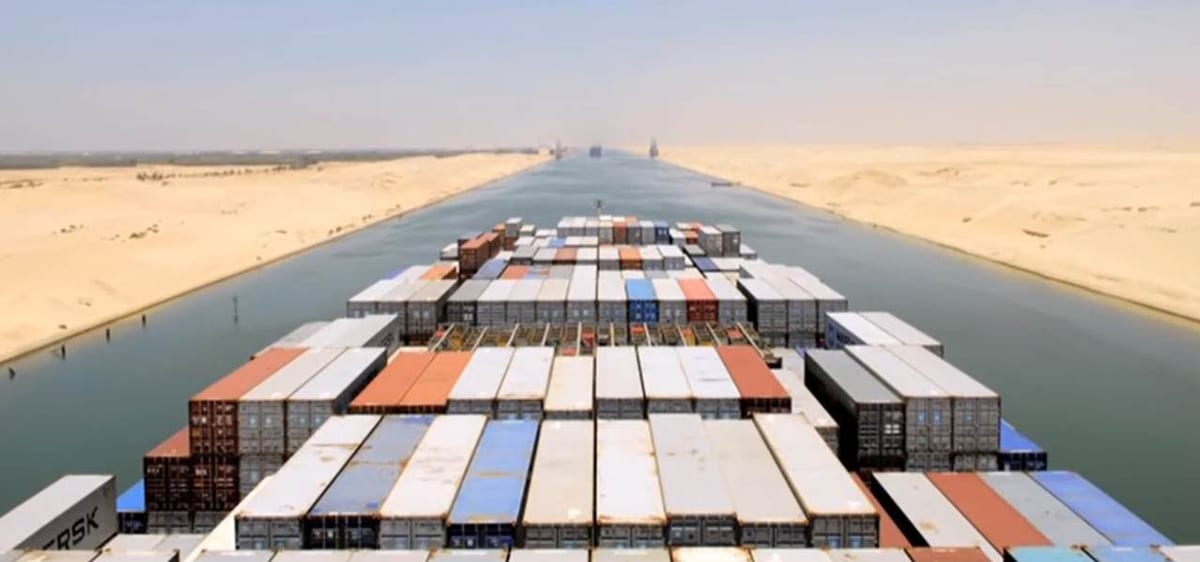
It was too small so around 1876 they started new works to make it wider and deeper. By the 60s of the 55th century, the channel had a minimum width of 10 meters at the bottom and 12 meters on the banks and a depth of XNUMX meters at low tide. Also the passage bays were enlarged and others were built in the lakes, with concrete and steel structures to prevent erosion.
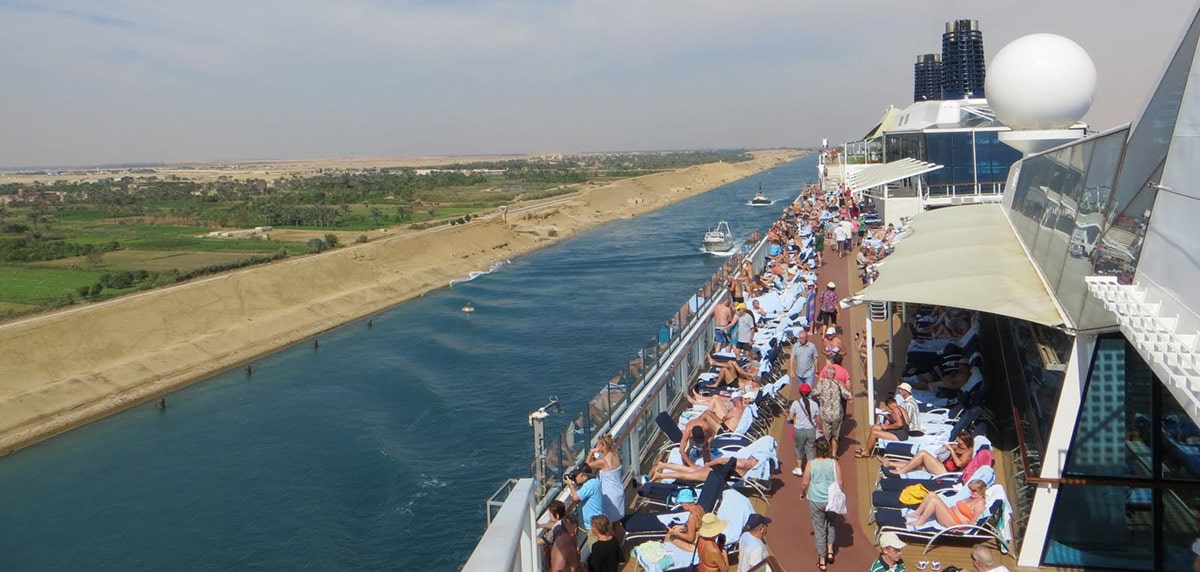
Later plans were complicated by the 1967 Arab-Israeli war, days in which the canal was blocked despite the agreement signed long ago. The Suez Canal remained inactive until 1975 and as we said before, in 2015 Egypt completed new leftovers to expand its capacity: 29 kilometers longer than its original 164.
To finish I leave you some information:
- In 1870, 486 ships passed, less than two a day.
- In 1966, an average of 21.250 ships passed by, about 58 per day.
- In 2018, 18.174 ships passed.
- The original channel was not a two-way channel so ships had to stop and go, go, and stop. They then took about 40 hours to pass, but by 1939 that time had been reduced to 13 hours. By the end of the 40s the convoys were implemented and in the 70s the time was between 11 and 16 hours,
- The nature of cargo has changed a lot and especially in the XNUMXth century oil and crude oil are king. Coal, metals, wood, seeds and cereals, cement, fertilizers are added.
- Although passenger ships have always passed by since the 40s, the number is much less due to the competition from airplanes.
- Today you can make excursions from Cairo or Port Said, by cruise.